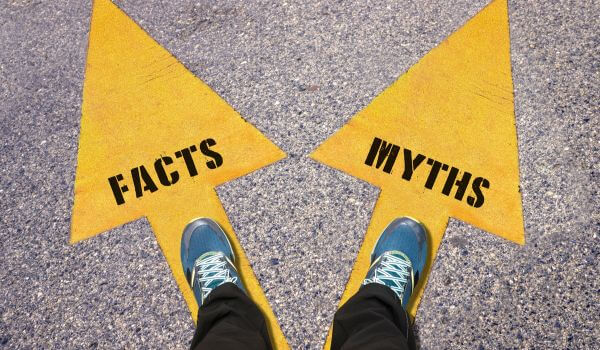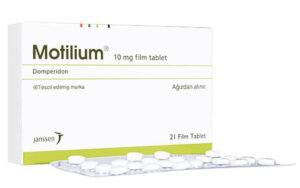 Major Depressive Disorder (MDD) is a significant mental health challenge, and it requires special attention and training for a doctor to reach a diagnosis of clinical depression. It is the most common of several forms of depression and is often the most difficult to diagnose and treat. It has to be differentiated from the other forms of depression, which include Melancholia, Psychotic depression, Antenatal and postnatal depression, Dysthymic Disorder, and Bipolar Disorder.
In future blogs, we will try to provide a comprehensive overview of each one of the different types of depression and their potential causes. In this article, we focus on clinical depression because more people are affected by it, and it has the most significant impact on society.
Major Depressive Disorder (MDD) is a significant mental health challenge, and it requires special attention and training for a doctor to reach a diagnosis of clinical depression. It is the most common of several forms of depression and is often the most difficult to diagnose and treat. It has to be differentiated from the other forms of depression, which include Melancholia, Psychotic depression, Antenatal and postnatal depression, Dysthymic Disorder, and Bipolar Disorder.
In future blogs, we will try to provide a comprehensive overview of each one of the different types of depression and their potential causes. In this article, we focus on clinical depression because more people are affected by it, and it has the most significant impact on society.
Diagnosing Clinical Depression / Major Depressive Disorder
The complexity around the diagnosis of clinical depression comes largely from the fact that there are no measurable symptoms that healthcare professionals can put a dimension and a label on. When examining a patient with other complaints, doctors are presented with recognizable and discernible signs pointing toward a specific diagnosis. For example, infections caused by a bug or virus produce certain common characteristics in anyone (raised body temperature, skin changes, breathing difficulty, inflammation, etc.) Blood, liver, kidney, and gland disorders can all be detected by simple analysis of blood samples. Depression, on the other hand, is experienced only by the patient and has to be explained in words that the doctor can understand. To produce a firm diagnosis of Major Depressive Disorder, a patient must claim that they experienced continued feelings of sadness; hopelessness; pessimism; emptiness; fatigue and lack of energy; insomnia, or other sleep issues like waking up very early or sleeping too much nearly every day, for at least two weeks. But each person has different ideas of what each of those terms means, and it is very difficult to measure how much of it they experienced. None of the symptoms can be calibrated or measured directly, which makes reaching a diagnosis of clinical depression a matter of judgment for the diagnostician. Adding to the difficulty is having to distinguish between, say, sadness and depression or cynicism and pessimism. Depression is quite different from sadness and grief. Someone feeling sad over a relationship ending or having lost a bundle of money in the market crash often might describe themselves as “depressed,” but being sad is not the same as having depression. Some people are born cynics, but that doesn’t mean they are depressed. A person who disbelieves politicians may be a cynic and vocalize their unhappiness each time elections come around, but that’s not clinical depression.Reaching a diagnosis of clinical depression
Typically, a doctor will start by asking questions about the thoughts, feelings, and behaviors of a patient complaining of symptoms of depression. There is a diagnostic manual, the Diagnostic and Statistical Manual of Mental Disorders (DSM-5), published by the American Psychiatric Association, the leading professional organization of psychiatrists in the United States and the largest psychiatric organization in the world. The DSM-5 outlines the criteria for diagnosing depression. Doctors pay attention to the duration and intensity of symptoms. To reach a diagnosis of clinical depression, the symptoms must persist for at least two weeks and affect the person’s ability to function normally. This distinction helps differentiate between depression and other disorders with similar symptoms such as anxiety, as well as rules out temporary feelings like sadness or grief. The doctor will rule out other possible causes for the symptoms, such as medical conditions or medication side effects. They may conduct physical examinations, order blood tests, or request additional information to ensure no underlying medical issues contribute to the symptoms. Ultimately, doctors will use their clinical expertise and judgment to diagnose clinical depression. They consider all the gathered information, symptoms’ duration and impact, and the diagnostic manual’s specific criteria.Finding a cause for depression
Once a diagnosis of clinical depression has been reached, doctors must try to establish if any specific events or conditions have caused the onset of depression because these can strongly influence the course of treatment:- Biological factors can make a person more susceptible to depression. This includes an imbalance in brain chemicals (neurotransmitters), hormonal changes (such as those occurring during puberty, pregnancy, or menopause), and differences in brain structure and function.
- Genetic factors, including a family history of depression, can lead to a higher likelihood of a person developing clinical depression at some point.
- Psychological factors like stressful life events (divorce or job loss), financial difficulties, a history of trauma or abuse, low self-esteem, or negative thinking patterns can also play a role in depression.
- Historical factors in a person’s past can contribute to depression. These may include experiencing traumatic events and living in a challenging or abusive environment. Post-traumatic Stress Disorder (PTSD) is a subset of clinical depression caused by such a history.
Susceptibility to clinic depression
Gender While depression can affect people of all genders, some gender differences have been noted. Women tend to be diagnosed with depression more frequently than men. Various factors, including hormonal fluctuations during the menstrual cycle, pregnancy, postpartum period, and menopause, may influence this difference. Additionally, social and cultural factors, such as gender roles, social expectations, and differences in coping styles, can contribute to the gender disparity in depression rates. Age Depression can occur at any age, but certain age-related factors must be considered. In children and adolescents, factors like family conflicts, academic pressures, bullying, and genetic predisposition can contribute to depression. Work-related stress, relationship issues, caregiving responsibilities, and midlife transitions may be relevant in adults. In older adults, factors like physical health problems, declining sexual prowess, chronic pain, loss of loved ones, and social isolation can increase the risk of depression. Personality type Much research has tried to determine if certain personality types are more prone to depression. It has yet to find a clear and concrete association between personality and depression. There are some indications that people with certain personality traits may be more susceptible, but that doesn’t mean they will develop depression, only that they may be at risk of it.- ISFPs (Introverted, Sensitive, Feeling, and Perceptive)
- Introverts
- Neurotics
- People with creativity and artistic ability
- Overachievers
- Perfectionists
















